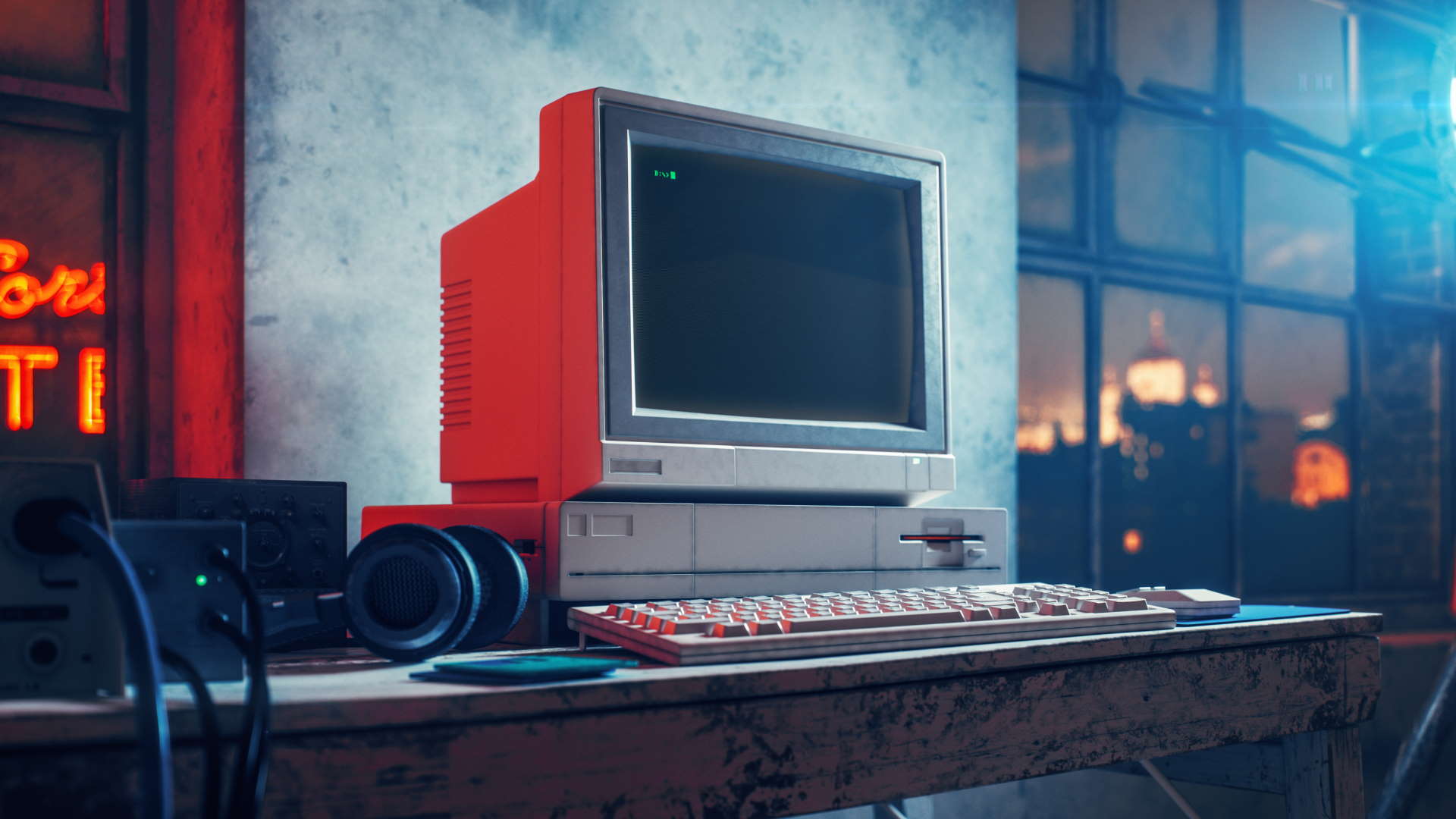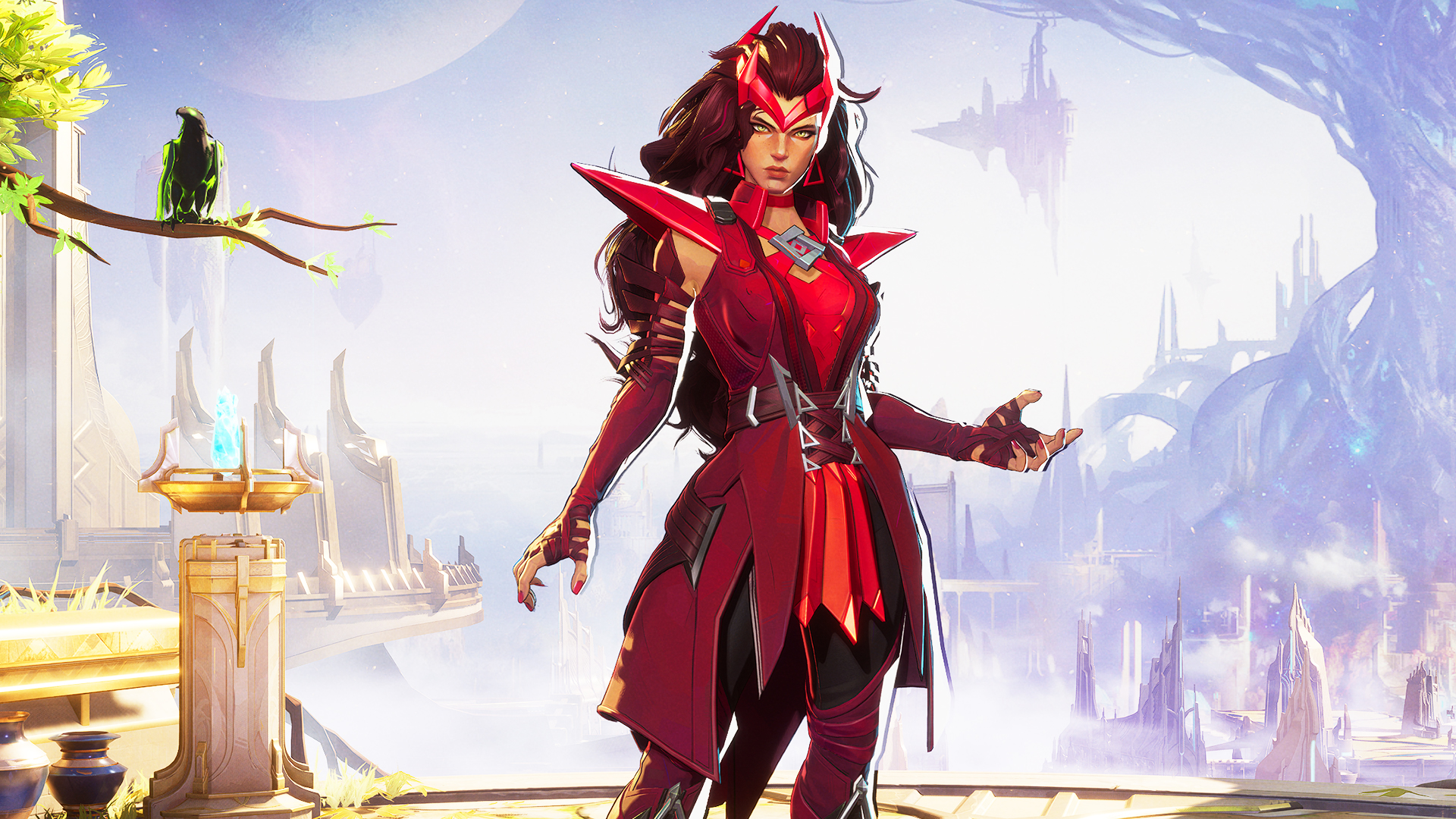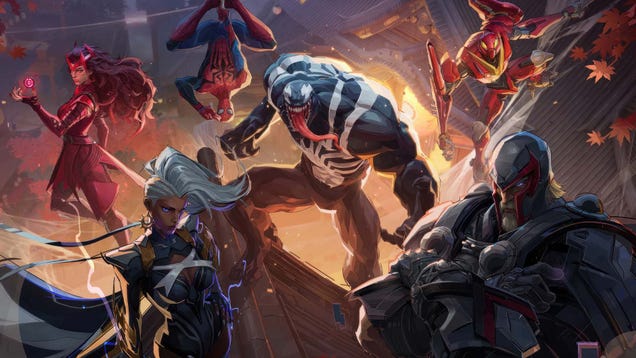
If you put PC Gamer in charge of the world, here's what the next 12 months would look like for our favourite hobby.
It’s a clean slate, a fresh start, a new year. Begone 2022, we won’t miss you. It’s now time to look ahead to the next 12 months and what technological delights might await us. And what might those be?
We’ve got CES 2023 coming up in the next few weeks, which will set out the stalls of many of the great and the good and the downright dreadful of the PC tech world, but don’t expect everything to be revealed in the first few days of 2023.
No, there will be undoubted surprises, and maybe even unwelcome appearances of things thought dead and gone. A crypto resurgence, anyone?
There are the things we know are coming, such as new laptop chips from Nvidia, Intel, and AMD, and PCIe 5.0 SSDs, but we’ve gathered the techie brain trust that is the PC Gamer hardware team together to figure out just what we want to see from 2023.
Allow me to begin…
1. 💰
What I want to see from PC gaming hardware most of all this year is some semblance of value. I want to feel like I can genuinely recommend PC gaming as a hobby not just for some unfeasibly well-heeled elite, but for anyone with a screwdriver and the will to get their fingers covered in thermal paste.
I want there to be a suite of affordable PC components that can deliver the same sort of 4K gaming performance that you’ll get from dropping $500 on a games console. If Intel’s low-end 700-series motherboards and Core i3 Raptor Lake chips deliver on their promise then the base will be there, but it’s all about what the GPU manufacturers want to do.
The chances of us getting a sub-$200 GPU that’s worth a damn is pretty low in all honesty.
With the way this latest generation of graphics cards has started, and the cheapest new GPU sitting at a still frankly offensive $900 price point, it’s not looking good for the lower-spec variants of either AMD or Nvidia’s RNDA 3 or Ada Lovelace architectures. The chances of us getting a sub-$200 GPU that’s worth a damn is pretty low in all honesty.
Roll on Battlemage? Hey, there’s a chance that Intel could get its second-gen Arc graphics cards onto the shelves in 2023, especially after Raja Koduri confirmed that it was still working to its original roadmap. If Intel wants to make a mark with this generation (and actually has more consistent silicon than Alchemist this time around) then it could make a real splash in the volume segment of the GPU market.
That roadmap also includes the Arc GPU tile that could actually make Meteor Lake an Intel processor architecture with genuine gaming silicon baked into it. If Intel doesn’t restrict the best GPU tile to its high-end chips, and lets it loose even down to the Core i3 level, that could deliver a great budget gaming chip that might not even need a discrete graphics card to game.
Then, throw in a cheap PCIe 4.0 SSD, a LEGO chassis, and SteamOS (when Valve finally gets around to releasing the desktop variant of the Steam Deck’s operating system), and you’ll have a great budget gaming rig. That’s what I want. Make it so.
2. 🦄
Apart from the utterly obvious—namely a sensibly priced GPU—what I most want in 2023 is a monitor that doesn’t disappoint. Yes, yes, yes, screen tech has developed rapidly in recent years. Refresh rates have gone ballistic, mini-LED backlights are rolling out and the first genuine OLED monitors, as opposed to repurposed TVs, have arrived.
But none of them really tick my boxes. For starters, forget mini-LED monitors. I’ve reviewed five or six different models and they all suck. The bottom line is that full-array backlighting is an utter kludge compared to the genuine per-pixel lighting of OLED. Even with, say, 1,152 lighting zones, with a 4K screen you’re still sharing any given zone over about seven thousand pixel, you’ve still got issues syncing the backlight with the LCD itself, and LCD viewing angles and response are still crap compared to OLED.
(Image credit: Future)
The sort of monitor you could imagine running for five, six, seven years or more.
Of course, OLED isn’t perfect, either. Alienware’s 34-inch panel was the first true OLED gaming monitor. It’s a fabulous monitor by many metrics. But $1,200 for a 34-inch 3,440 by 1,440 panel? Gimme a break. LG has some OLED monitors coming soon, too. But one is a 27-inch 1440p panel for $999 and the other a 45-inch lump with that same 3,440 by 1,440 resolution. Yuck.
What I want is a 32-inch 4K OLED, maybe a 34-inch 5K/2K ultrawide panel, or if I’m being really greedy a 40-inch 5K/2K panel. The latter has the same crispy pixel density as 32-inch 4K, just on a much more cinematic ultrawide scale. Imagine that in OLED spec with 0.03ms response, perfect black levels, infinite contrast, and genuine HDR capability. It wouldn’t be cheap. But it would be the sort of monitor you could imagine running for five, six, seven years or more, making it a viable long term investment. I’m pretty sure there are no plans for such a panel. But a guy can hope, right?
3. 🖥️
Of course I’m here hoping for yet another surge (or at least a continued one) in AI advancement. Machine learning has evolved exponentially since the start of 2022, though, as you might expect, it has come weighed down with its fair share of controversies. What I’m willing for the new year is a full embrace of artificial intelligence. In particular I’m excited to see what more it can bring to us in the gaming industry.
Having come from a background learning game art and design at university, I can safely say that too much of game developers’ time is spent performing menial tasks; so many nights spent retopologising 3D models has left a sour taste in my mouth, and I’m truly hyper-aware of the need for automated solutions across the board.
Games that really seize the chaotic energy that artificial intelligence can bring.
If we can figure out more ways to integrate artificial intelligence in the game design pipeline, game studios will have more time to zoom out and look at the bigger picture—something humans seem to have a knack for over algorithms. With machine learning we have the potential to save designers heaps of time and effort, particularly when it comes to smaller indie companies where staff members are few and money scarce.
In fact, I hope this will be the year we see games moving on from D&D inspired AI algorithms that write a text adventure while you play it, to games that really seize the chaotic energy that artificial intelligence can bring to the emergence of unique narratives. Here’s hoping.
4. ⚡
My wish probably won’t come true, but what I really want to see is a halt to ever higher PC power consumption. We all love high performance from our rigs, but it should not come at just any cost. Companies seem all too happy to continually push power consumption to ever higher levels for a few extra frames per second or to eke out a benchmark win versus the competition.
Brute force shouldn’t displace innovation. The world is grappling with cost of living and energy shortages, and there are wider climate concerns. The humble PC is moving in the opposite direction to where it should be. Too much power efficiency is lost chasing that last 10% of performance out of an architecture.
Where do we go from here? 1000W PSUs for mid range systems? 600W graphics cards that take up five slots? 400W CPUs? We already see that a 360mm AIO struggles to keep a Core i9 13900K from throttling under a heavy load, and many have to resort to banshee level fan speeds. AMD 7000 series CPUs easily run into the 90s too.
(Image credit: Chiphell)
I’d like to see Arm based systems become viable alternatives for PC gamers.
In hotter climates, like we have here in Australia, it’s becoming a problem to run a high performance PC when it’s 35 or 40°C outside, if not more. Nobody wants to be running the equivalent of a radiant heater in their room that has to fight with the air conditioning. Gamers in tropical climates don’t want it either, though if it’s snowing outside…
With that in mind, I’d like to see Arm based systems become viable alternatives for PC gamers. There are billions of mobile gaming devices, so the expertise is there. There’s an opportunity for a company to reinvent the desktop gaming market. There’s too much legacy baggage with x86. 2023 won’t be the year it happens, but a momentum shift is definitely possible, even inevitable given a long enough timeline.
5. 💩
I want more weird shit.
It feels like a lot of tech is peaking, and not in a fun psychedelic way. Instead, we’re seeing an influx of iterative variations of very familiar ideas. It gets a little boring to write about small advancements, even if they are what keeps the tech world spinning. Sure, let’s keep perfecting things in the background until we can get Jeremy’s super monitor, but for 2023 give me gimmicks. If you really want to impress me, give me ones that actually work.
The unfortunate truth about tech is that there are a lot of ways it currently hurts the environment. As Chris says, power consumption is getting out of control to run high end equipment, then there’s the process of mining and manufacturing it all. Until we can get that under control, it seems irresponsible to be seeking innovations through power. Plus, games are already pretty technically amazing as it is.
Mouse and keyboard is the least natural way you could possibly imagine controlling most video games.
I think currently, innovation needs to be done with ideas rather than power, at least until we get on top of those problems. Especially when some products do feel incredibly stagnant at the moment, anyway, and could use some fun freshening up.
There are countless mechanical keyboards out there housing their own, often very excellent switches, and yeah we very much need to have that down. But we’re also in a climate where I’m getting excited about the few who have something as simple as knobs or nice looking keycaps. Analogues are around, but aren’t being explored by enough brands to mean games are looking to adopt control options that use it. That’s before we’re even willing to admit that mouse and keyboard is the least natural way you could possibly imagine controlling most video games.
And sure, we do see a lot of innovation in this space by DIY-ers and niche brands, but we need far more money behind it. I think 2023 is a great time for big brands to start getting a little less safe, and start showing us some of their weirder ideas. I’m certainly keen to write about them.
6. 💾
I want to see 2023 become the year of DirectStorage. The newfangled tech out of Microsoft promises to revolutionise SSD usage on PC, and even that might be underselling its wide-ranging wares. It promises to lead to better utilisation of speedy PCIe NVMe drives, in a marked shift away from sluggish spinning platters once and for all.
There’s one overarching goal in mind: streaming bigger assets faster. DirectStorage has been shown in testing to load game scenes nearly three times faster than a traditionally setup system and it has the added advantage of freeing up precious CPU resources to be used elsewhere.
That’s because getting massive textures from solid state storage onto your monitor is a task fraught with bottlenecks. The CPU is perhaps the biggest of the bottlenecks in today’s systems (for this particular task), so DirectStorage helps shift as much work away from the CPU as it’s able to. To do this, DirectStorage ropes in your graphics card and something called GPU decompression.
(Image credit: Luminous Productions)
DirectStorage is not only Microsoft’s job to roll out.
Basically, DirectStorage 1.1 offloads the decompression work from the CPU onto the GPU, something which your highly-parallel graphics card can do with ease. It also means there’s no need to store these assets elsewhere but the SSD and the graphics card’s speedy memory, which is specifically made for high bandwidth and high performance with massive texture files and the like.
The thing is, DirectStorage is not only Microsoft’s job to roll out. In fact, Microsoft has already released DirectStorage 1.1, following on from DirectStorage 1.0 back in March. It’s now onto game developers to implement it. That’s easier said than done, and the one game we had expected to bring DirectStorage to our machines before the end of the year, Forspoken, has been delayed until 2023.
Supposedly The Witcher 3’s next-gen update would also bring with it support for DirectStorage, but there’s nothing in the patch notes to suggest that’s the case post-launch.
Alas, DirectStorage remains an elusive technology. But I’m hopeful; hopeful that Santa’s sack is filled with effective asset streaming APIs and that I’ll have a better reason to buy a super-speedy PCIe 5.0 SSD in the new year.
7. ⚖️
Is it too soon to ask for a Steam Deck Slim? I absolutely love my Steam Deck and it’s definitely gotten a lot more use in my household and commute than I imagined. As much as the Steam Deck is a fantastic piece of kit, it still has issues.
For starters, it’s big and heavy by handheld standards. I would love to see Valve produce a SKU that’s more in line with the Nintendo Switch Lite. I mean, it’s already a better Nintendo Switch, why not go all the way? Give it a slimmer form factor, get rid of the touchpads, bring the d-pad and face buttons closer to the screen that way it feels better in your hands when you play for long stretches. Give me some 5G support so I don’t have to wrestle with networks trying to get single player Steam games to play in offline mode while riding the bus or anyplace where Wi-Fi isn’t readily available.
I want a Steam Deck that’s optimized for travel, and available in fun colors.
I love the fact that I can play all my favorite strategy games like Tactics Ogre Remastered or Marvel friendship simulator, Midnight Suns, but I’ll be lucky if I can get more than an hour battery life on my Deck on newer games that require a little bit of graphical horsepower. I want a Steam Deck that’s optimized for travel, and available in fun colors. Is that too much to ask for?
Other hardware makers are leaning towards cloud-based handhelds like the Logitech G Cloud or the upcoming Razer Edge. Now, I can appreciate what these machines are doing, but the technology isn’t quite there yet to provide the latency free gameplay. And honestly, nothing beats loading up an Dreamcast Emulator off an SD card and playing Skies of Arcadia when you’ve been stuck in traffic inside the Lincoln Tunnel for 90 minutes.
I’m hoping Valve releases some more versions of the Steam Deck. A whole ecosystem of strange decks (Steam Deck OLED, Steam Deck Pro, Steam Deck 5G, anyone?) or at the very least, we start seeing some more Deck-a-likes from competitors hitting the market in 2023.






